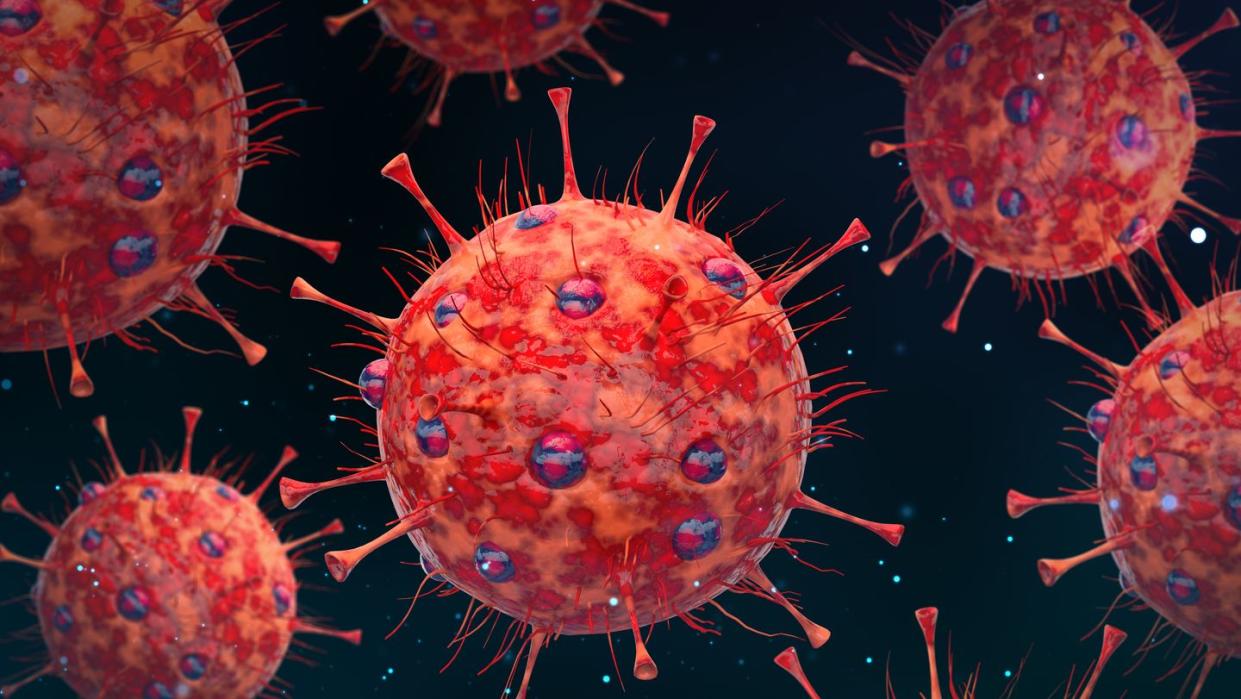Symptoms of the KP.3 COVID Variant, the New Dominant Strain

KP.3 is the most common COVID-19 variant in the U.S. right now
This strain descended from JN.1, which was the dominant variant this winter.
Doctors do not expect it to cause more severe illness.
There have been a lot of changes with COVID-19 over the last few months, but a new variant is poised to be the dominant strain of the summer: KP.3.
KP.3 is part of a trio known as the FLiRT variants and just surpassed fellow FLiRT variant KP.2 as the most common COVID-19 strain in America, according to data from the Centers for Disease Control and Prevention (CDC). As of now, KP.3 is responsible for 25% of COVID-19 cases in the country.
Meet the experts: William Schaffner, M.D., an infectious disease specialist and professor at the Vanderbilt University School of Medicine, Roy Giulick, M.D., chief of infectious diseases at Weill-Cornell Medicine, Amesh A. Adalja, M.D., senior scholar at the Johns Hopkins Center for Health Security, Hana El Sahly, M.D., professor of Molecular Virology and Microbiology at the Baylor College of Medicine
Unfortunately, COVID-19 cases seem to be on the rise—and emergency room visits linked to the virus have also jumped. But what is KP.3 and how concerned should you be this summer and beyond? Infectious disease doctors break it down.
What is the KP.3 COVID-19 variant?
KP.3 is a member of a group of COVID-19 variants known as the FLiRT variants. (Fellow FLiRT variants include KP.2, which was the previous dominant strain in the U.S. and KP.1.1.)
“It’s the successor to KP.2,” says William Schaffner, M.D., an infectious disease specialist and professor at the Vanderbilt University School of Medicine. KP.3 is in the Omicron family, and evolved from JN.1, which was the dominant strain of COVID-19 this winter, Dr. Schaffner points out. “This is kind of a grandchild of Omicron,” Dr. Schaffner says.
It’s not shocking that there is a new dominant COVID-19 variant, though, says Roy Giulick, M.D., chief of infectious diseases at Weill-Cornell Medicine. “As the COVID-19 virus continues to evolve, it continues to make changes that lead to other variants,” he says.
Dr. Schaffner also notes that KP.3 is “very contagious and spreading now.” KP.3 and JN.1 are very similar, he says—there are only a few changes to the spike protein between them, which is what SARS-CoV-2, the virus that causes COVID-19 uses to latch onto your cells and infect you.
What are the symptoms of KP.3?
The symptoms of KP.3 are similar to what they’ve been for COVID-19 for years. “The symptoms remain those of an upper respiratory infection,” Dr. Giulick says. According to the CDC, that may include:
Fever or chills
Cough
Shortness of breath or difficulty breathing
Fatigue
Muscle or body aches
Headache
New loss of taste or smell
Sore throat
Congestion or runny nose
Nausea or vomiting
Diarrhea
How is KP.3 treated?
Existing antiviral medications should work against KP.3, Dr. Schaffner says. That means you can treat symptoms of a mild infection with over-the-counter medications like acetaminophen or ibuprofen, per the CDC.
If you’re at high risk of developing a more severe illness, prescription medications like Paxlovid, Veklury, and Lagevrio may help, as long as you start them within five to seven days after symptoms start.
How can you prevent a KP.3 infection?
To lower your risk of getting a KP.3 infection, Dr. Schaffner recommends being up to date with your COVID-19 vaccines. (While being vaccinated won’t necessarily keep you from getting infected, it can lower the risk you’ll develop severe illness if you happen to get sick, he says.)
If you’re in what’s considered an incredibly high-risk group, you may want to talk to your doctor about taking the new pre-exposure antibody Pemgarda, says Amesh A. Adalja, M.D., senior scholar at the Johns Hopkins Center for Health Security. This is an investigational drug that is designed for people who have moderate-to-severe immune compromise because of a medical condition or because they receive medicines or treatments that suppress the immune system and are unlikely to have a good response to the COVID-19 vaccine, per the FDA.
Beyond that, Dr. Schaffner recommends doing your best to avoid crowded indoor activities, especially if you’re considered high risk for serious infection—meaning, you’re an older adult, you’re immunocompromised, or you’re pregnant. “If you are going indoors, bring your mask along,” he says. Look for a well-fitting KN95 or N95 face mask. Washing your hands regularly can also help, Dr. Giulick says.
When you’re outside, Dr. Schaffner says you’re fine to go without a mask, whether you’re considered high-risk or not. “I am very cautious and I don’t put on a mask when I’m outdoors,” he says.
Still, it can be tough to entirely wipe out the risk of getting COVID-19. “This is an endemic virus, and you cannot completely limit your risk for infection, just like with any other respiratory virus, if you socially interact with individuals,” Dr. Adalja says.
Will the fall COVID-19 vaccine protect against KP.3?
The U.S. Food and Drug Administration’s Vaccines and Related Biological Products Advisory Committee panel recently met to determine updates to the COVID-19 vaccine for fall. That advisory group voted to recommend that the FDA ask vaccine makers to update their current COVID-19 vaccines to be more effective against the JN.1 lineage.
“The fall vaccine should protect against KP.3,” says Hana El Sahly, M.D., professor of Molecular Virology and Microbiology at the Baylor College of Medicine. “The vaccine's composition targets the JN.1 variant, from which KP.3 evolved and with which it is closely related.”
You Might Also Like

